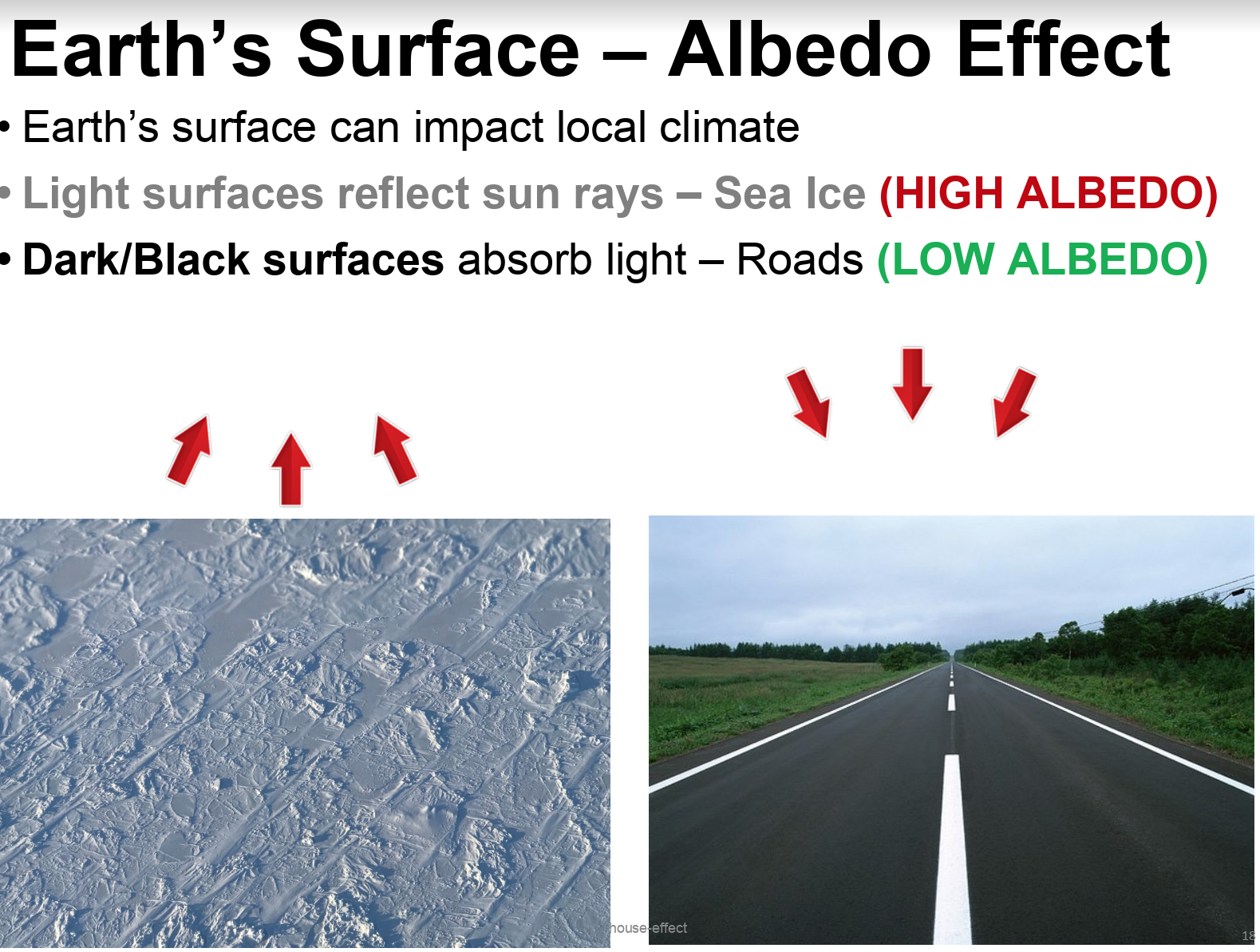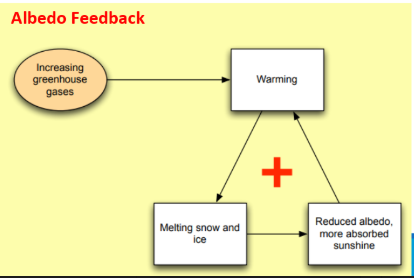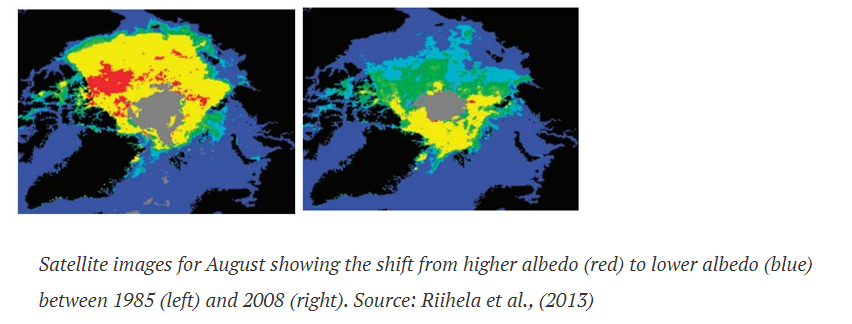The Albedo Affect
Albedo is a measure of how well the earth’s surface reflects sunlight. Half of the received energy from the sun (sunlight) is absorbed by the Earth’s surface. Some is reflected by the Earth’s surface. Radiations are reflected/scattered back into space & partly absorbed by the atmosphere. Average albedo over earth’s surface = 0.11 but can differ by changes in vegetation & habitation. Dark colours absorb sunlight while light colours reflect sunlight. Therefore, the ice present on Earth, (e.g. Arctic and polar regions) reflects the sun’s energy instead of absorbing it.

Due to increased greenhouse gas emissions which are absorbing the sun’s radiation and re-emitting it back into the atmosphere, the greenhouse effect has accelerated contributing to the global warming phenomena. This is causing the ice to melt. Snow-covered sea ice has a high albedo, reflecting up to 85 per cent of sunlight. As the area covered by ice and snow gets smaller, sunlight that would have been reflected is absorbed by open water instead, warming it up.
The figure below illustrates the albedo feedback.

New research published in Nature Climate Change examines how Arctic ice loss is likely to influence and be influenced by warming in the coming century. It examines how Arctic albedo has changed over 3 decades (1982-2009).
The team of scientists from Finland use new satellite measurements of reflectivity throughout the melt season, from May to August, to look for trends over time across the whole Arctic region. The loss is pretty clear in the satellite images below, which show albedo for the month of August in 1985 on the left and in 2008 on the right. Marked in red, areas with an albedo of 75 per cent or more have all but disappeared and have been replaced by green, which represents about 40 per cent. There is quite a lot more light blue, up to 30 per cent, and dark blue, which is 15 per cent and under.

Albedo is also affected by changes in the condition of the ice that remains. For example, ice is getting darker as industrial soot – known as black carbon – is finding its way into the Arctic. This has major implication for even the smallest algae to the biggest predator. Scientists also think sea-ice loss is disrupting winter weather in the northern hemisphere.
Source: Riihel et al., (2013) Observed changes in the albedo of the Arctic sea-ice zone for the period 1982 to 2009. Nature Climate Change, doi:10.1038/NCLIMATE1963

Copyright © All Rights Reserved

